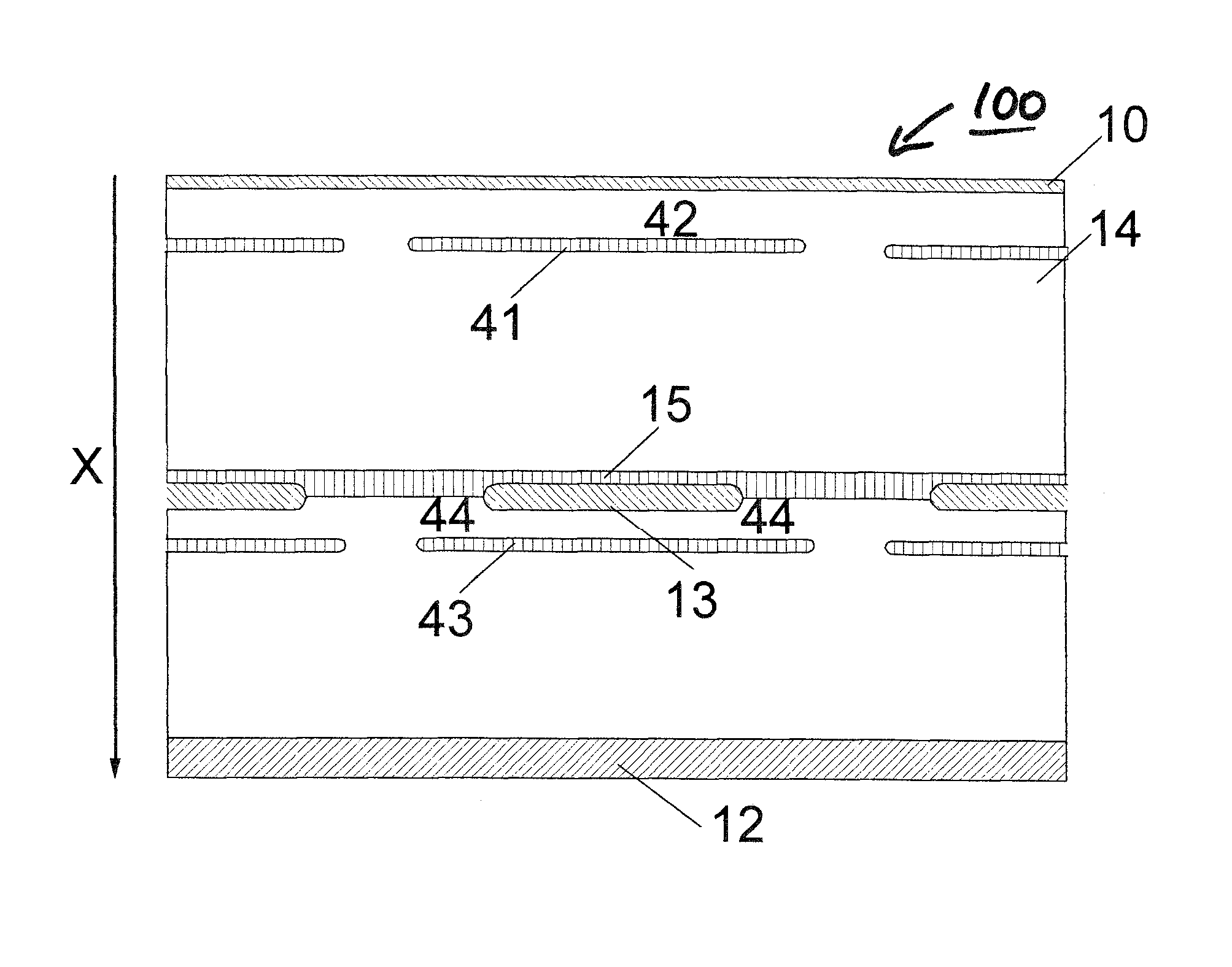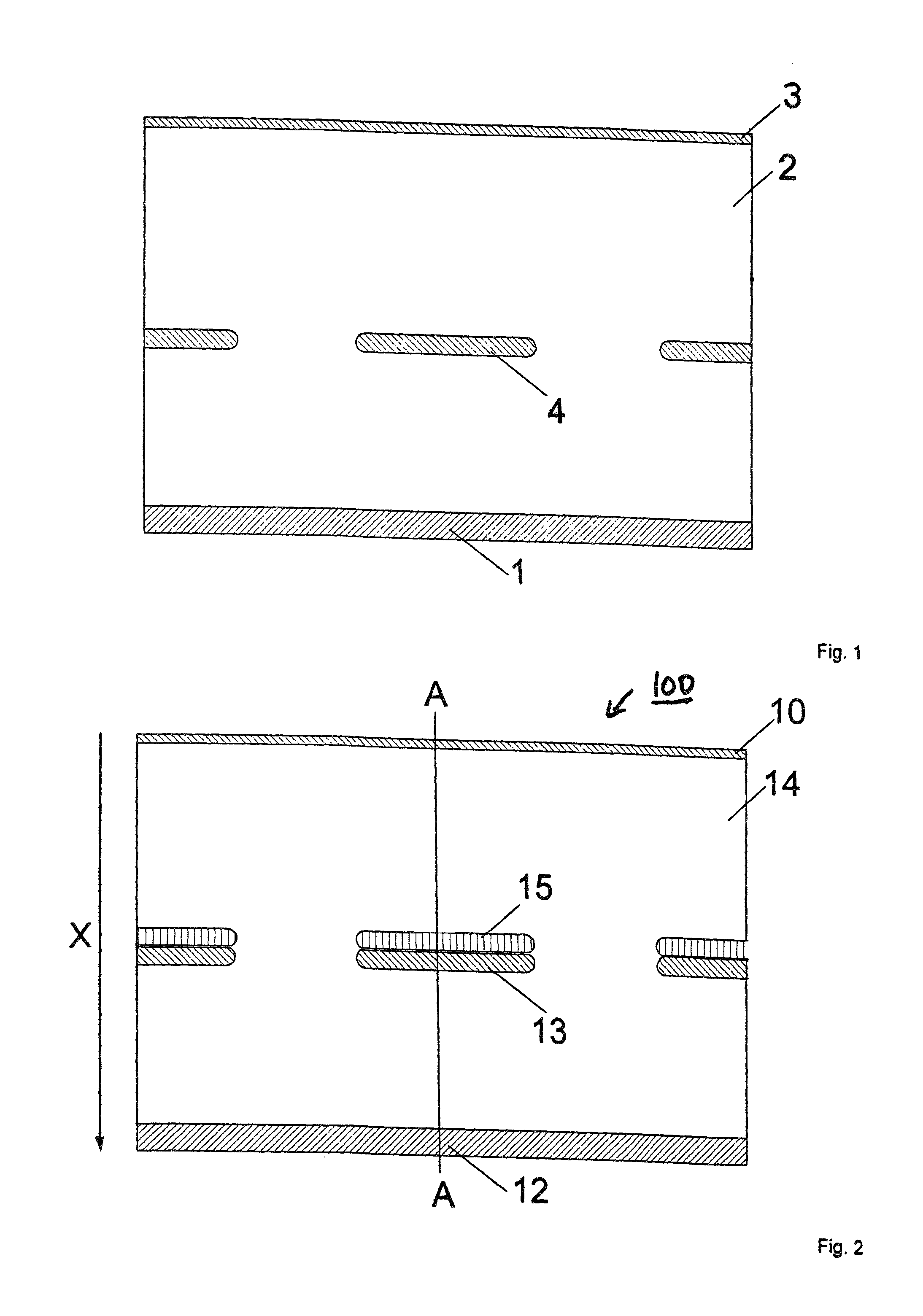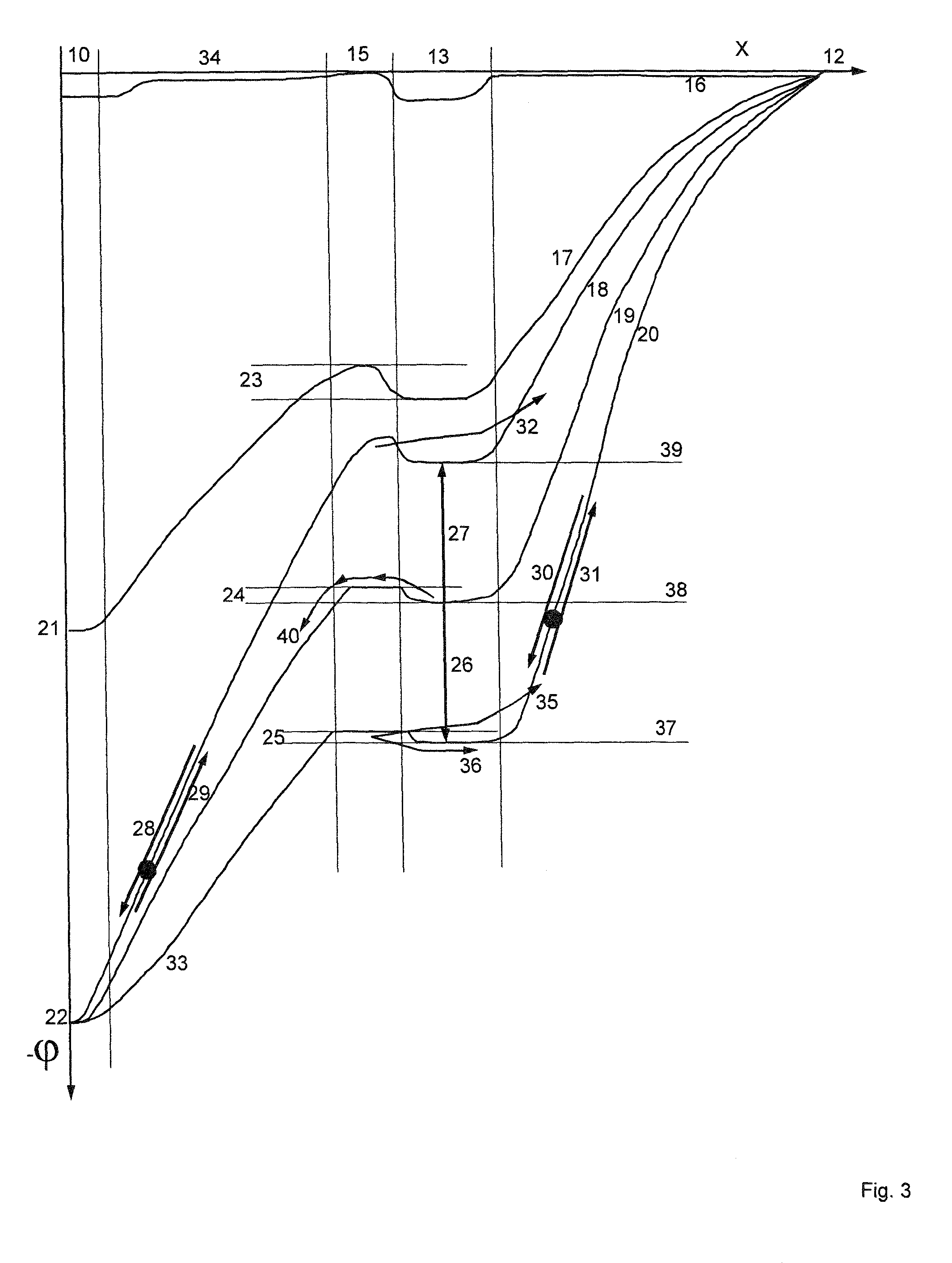Semiconductor structure for a radiation detector and a radiation detector
a radiation detector and semiconductor structure technology, applied in the direction of radiation control devices, semiconductor devices, electrical apparatus, etc., can solve the problems of limited function to rather small pixel geometries, significant yield loss, and low resistance semiconductor layers to be used, so as to reduce the so-called “afterpulse” and achieve precise manufacturing of operating point and yield. , the effect of quantum yield
- Summary
- Abstract
- Description
- Claims
- Application Information
AI Technical Summary
Benefits of technology
Problems solved by technology
Method used
Image
Examples
Embodiment Construction
[0047]One exemplary embodiment proceeds from an n-conductivity type of material for a semiconductor substrate. However, the aspects of the disclosure can also be applied without limitation to p-conductivity type substrates. In this case, the indicated conductivity types must be cyclically switched.
[0048]FIG. 1 shows a schematic view of a known semiconductor detector. A low-resistance p-type semiconductor substrate 2 with an n-conductivity type top diode 3 is arranged on a very low-resistance n-type epitaxial substrate 1. Located in roughly the middle of this arrangement are n-type doping zones 4, which are completely isolated and “float”. Only a small section with three of the doping zones 4 are depicted here. However, real components can exhibit thousands of them, arranged as a matrix or also in hexagonal fields. Disadvantages here include the large operating point voltages for completely depleting the low-resistance layers, and of course the large capacitances of the “floating” st...
PUM
 Login to View More
Login to View More Abstract
Description
Claims
Application Information
 Login to View More
Login to View More - R&D
- Intellectual Property
- Life Sciences
- Materials
- Tech Scout
- Unparalleled Data Quality
- Higher Quality Content
- 60% Fewer Hallucinations
Browse by: Latest US Patents, China's latest patents, Technical Efficacy Thesaurus, Application Domain, Technology Topic, Popular Technical Reports.
© 2025 PatSnap. All rights reserved.Legal|Privacy policy|Modern Slavery Act Transparency Statement|Sitemap|About US| Contact US: help@patsnap.com



